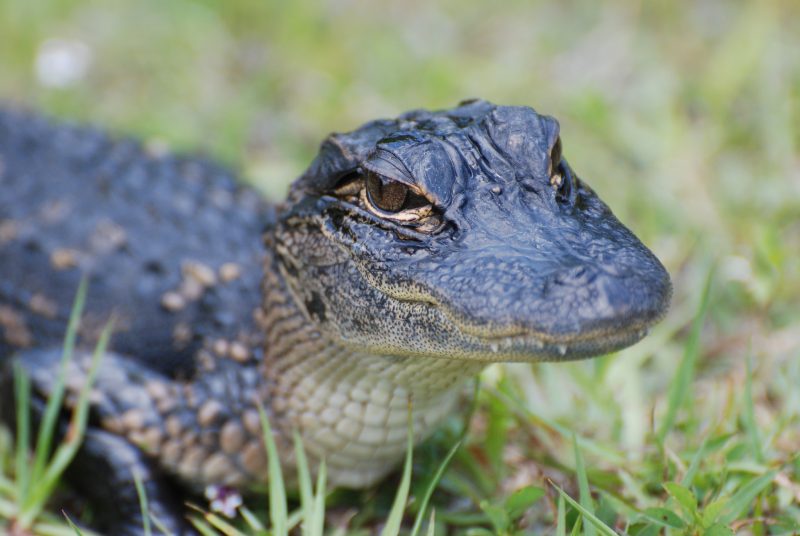The ectothermic and endothermic animals they differ from each other by having or not the ability to regulate their temperature independently of the ambient temperature.
- ectothermic animals. Also called “cold-blooded” are those whose body temperature varies with the ambient temperature. For example: crocodile, ants, cricket.
- endothermic animals. Also called “warm-blooded” are animals that can regulate their temperature regardless of the environmental temperature. For example: dog, canary, human.
ectothermic animals
Methods to stabilize body temperature:
- Heliothermy. It is the capture of heat offered by solar radiation. It is a common method in reptiles and also used even by endodermal animals.
- Thigmothermia. It is the capture of heat by contact with hot surfaces, that is, by conduction. The hot surfaces can be stones heated for example by the sun. But contact can also be with liquids. This is the method of many aquatic animals as they seek out warm waters.
Most of the ectotherms are insects and reptiles.
“Cold blood”. They are called cold-blooded animals because they feel cold when touched. However, some ectothermic animals in hot environments (for example, iguanas in the desert) can have temperatures much higher than the human body.
Advantages
- It can survive more easily in times of food scarcity because it does not need to maintain its stable temperature, so it spends less energy.
Disadvantages
- It depends on external climatic conditions.
- It must have multiple chemical systems to adapt to different temperatures.
examples of ectothermic animals

- Alligator. Use heliothermy during the day. At dusk it enters the water, which maintains the heat of the day for a longer time (thigmothermia). As soon as the sun rises, it remains motionless in a cleared area of land, to receive its warmth.
- Ants. They usually build the superficial tunnels of the anthills under stones that receive the heat of the sun. As the stones keep the heat longer, they transmit it during the night to the anthill (thymothermy) with greater efficiency than the earth.
- Crickets. The metabolism of crickets increases with environmental temperature. Among the functions of your body that depend on your metabolism is the sound you produce. Therefore, the higher the ambient temperature, the smaller the pause between one sound and another.
- desert iguana (Dipsosaurus dorsalis). Dark-colored individuals absorb 73% of the visible light and therefore of the sun’s heat. Light colored individuals absorb only 58% of visible light. One of its methods to stabilize body temperature is the regulation of peripheral blood flow: the vessels contract and therefore decrease heat exchange, or dilate (increase in size) so that heat exchange increases. .
- desert lizards. They take advantage of changes in solar radiation during the day to maintain a relative constant in their body temperature. They come out of their burrows and feed alone in the early morning, flattening their bodies (like crocodiles) to absorb as much heat as possible. When ambient heat increases, they move away from the ground to avoid radiating heat and also decrease the surface area of the body that receives heat from the sun. In this way, they manage to maintain a body temperature of between 36 and 39 degrees, while the ambient temperature varies between 29 and 44 degrees.
endothermic animals
They have the ability to control body temperature by certain internal activities such as burning fat, panting, increasing or decreasing blood flow, or shivering.
The vast majority (but not all) also meet two characteristics:
- Homeothermy. The internal temperature remains stable regardless of the external temperature. The internal temperature is usually higher than the external one.
- Tachymetabolism. The resting metabolic rate is lower than the active metabolic rate, but not significantly. Therefore, tachymetabolic animals cannot cope with food shortages by slowing down their metabolism.
Most endotherms are mammals and birds.
Advantages
- It can maintain the most appropriate temperature for chemical reactions in the body.
Disadvantages
- Thermoregulation is maintained even in periods of inactivity, maintaining a high metabolism and energy expenditure.
- In times of food scarcity it cannot slow down its metabolism.
examples of endothermic animals

- Dog. When their body temperature rises, dogs have different mechanisms to regulate it. Although they do not have a large number of sweat glands, they do perspire through the pads of their feet. Furthermore, the most important thermoregulatory mechanism in dogs is panting: warm blood is pumped to the tongue where the heat is removed as moisture.
- Polar Bear. The body temperature of polar bears is constant and approximately 37 degrees, that is, very close to human. However, they are able to live in much lower ambient temperatures, sometimes less than 30 degrees below zero. This is because they keep the internal temperature isolated from the external temperature thanks to thick layers of hair, skin and fat.
- chickens. They maintain a relatively constant temperature between 40 and 42 degrees. Although they are endotherms, young hens are more dependent on the environmental temperature to maintain this temperature, so they must be protected if the environmental temperature is below twelve degrees or above 24 degrees. As with other birds, thanks to the fact that the hen maintains her own body temperature, she can in turn pass it to her eggs when she is brooding.
- canaries. Unlike mammals, birds do not have sweat glands, that is, they do not rely on sweat as a resource to lower body temperature. But they do have other resources:
- Radiation. The heat escapes through the surface of the skin.
- Driving. The heat passes to other objects (which are at a lower temperature)
- Convection. The heat radiates into the air surrounding the canary. If you are in a ventilated environment, this air rises easily, being replaced by cooler air.
- Human being. We can see from our own experience to what extent endothermy is possible. Whether it’s hot or cold, our body temperature always stays between 36 and 37 degrees. When it is too cold, we shiver like other animals and we can see that the tips of our fingers turn blue (in extreme cold), because the body’s response is to reduce blood circulation in peripheral areas. When it’s too hot, we sweat. In addition to being endotherms, we are homeotherms, which means that our body is prepared to always function at a constant temperature, unlike ectotherms. Therefore, if we stay in the cold for too long, we suffer from hypothermia, because our body cannot adapt. Fortunately, unlike all other animals, human beings have the ability to supplement our natural defenses with other artificial defenses, such as shelter and shelter.
